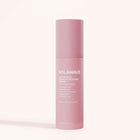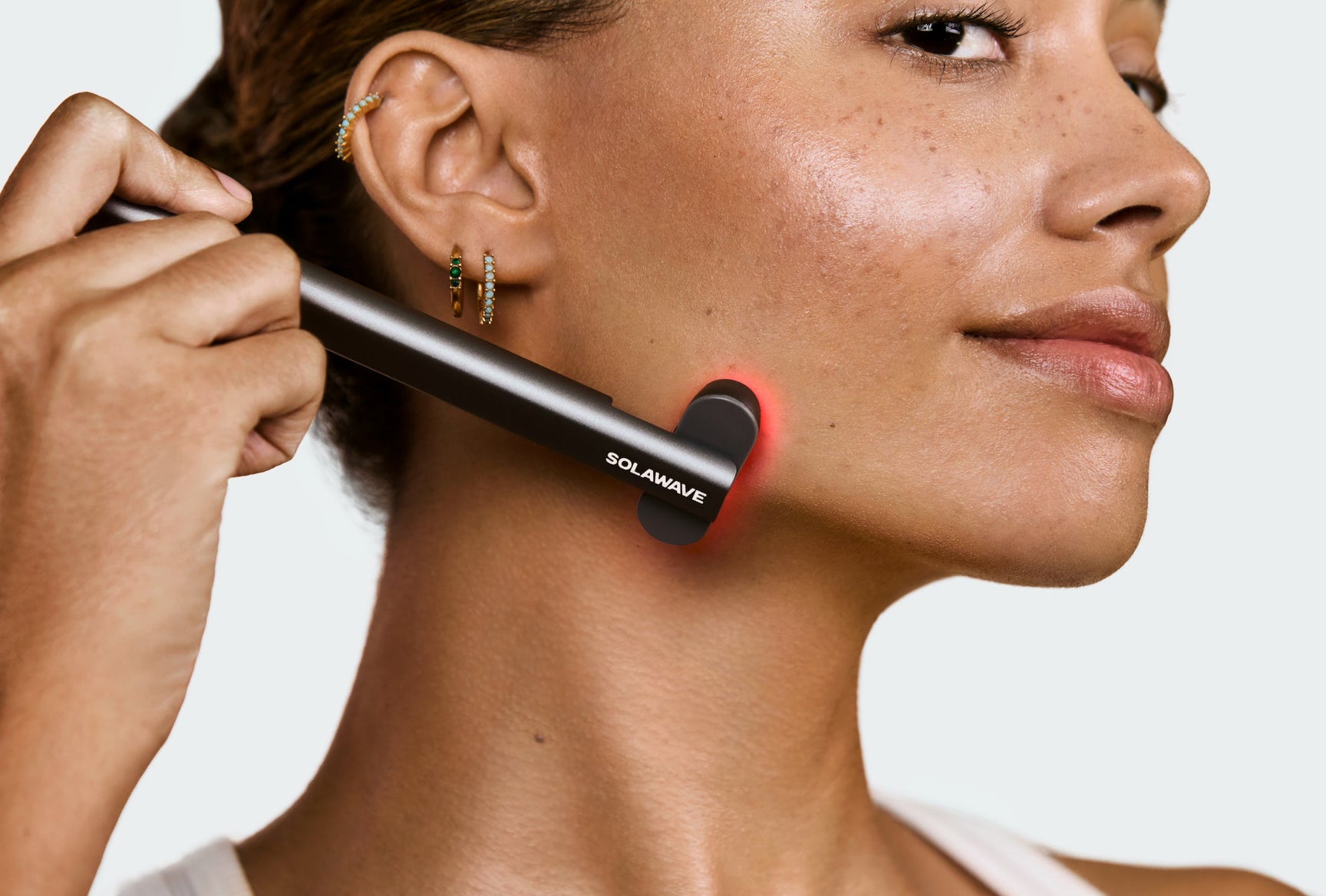

How Deep Does Red Light Therapy Penetrate?
Curious about how Red Light Therapy supports healthier-looking skin? You’re not alone. As more people look for non-invasive ways to upgrade their skincare routines, Red Light Therapy has become a standout option for those seeking visible results at home. But how deep does Red Light Therapy actually penetrate your skin, and what does that mean for your results?
In this guide, we'll talk about the science behind Red Light Therapy, how different types of light reach various layers of your skin, and what you can expect from this innovative approach to skin rejuvenation.
What Is Red Light Therapy?
Light Therapy is a non-invasive skincare technique that uses specific wavelengths of light to enhance the appearance of your skin (i.e., it’s a type of photobiomodulation). Light Therapy can help address a variety of skin concerns thanks to the different effects that different wavelengths of Light provide, making it a versatile option for those seeking visible improvements without harsh treatments.
Red Light Therapy is one of the most popular forms of Light Therapy, especially in the world of skincare. It uses wavelengths in the range of 630 to 700 nanometers, which are absorbed by the skin to support healthy collagen production. Collagen is essential for maintaining skin’s firmness and smoothness, but its natural levels decrease with age, which leads to visible signs of skin aging like fine lines and wrinkles. Red Light Therapy helps reduce the look of these changes, giving your skin a firmer, healthier look.
This approach has become a favorite among skincare enthusiasts because it’s gentle, requires no downtime, and can be easily incorporated into your at-home routine with professional-grade devices. Whether you’re looking to smooth the appearance of wrinkles, brighten the look of dark circles, or simply visibly rejuvenate your skin, Red Light Therapy offers a convenient and effective way to upgrade your skincare regimen.
How Deep Does Red Light Therapy Penetrate?
Red Light Therapy uses specific wavelengths that can reach beneath the skin’s surface, and the depth of penetration depends on several factors. When you use Red Light Therapy, the light energy is absorbed by your skin and travels through the different layers of your skin. Shorter wavelengths, like those in the visible red spectrum, generally reach the outer and mid-layers of the skin. Longer wavelengths, such as those in the Near-Infrared range, can penetrate even deeper, reaching the lower layers of the dermis.
Red Light Therapy uses wavelengths in the 620 to 700 nanometer range, which fall within the visible red spectrum. This type of Red Light penetrates up to a few millimeters beneath the skin’s surface, reaching the outer and mid-layers. Red Light Therapy is highly effective for supporting healthy collagen production and improves the appearance of fine lines and wrinkles.
Deep Red Light Therapy uses wavelengths typically around 630 to 660 nanometers. This range is especially effective at targeting the surface and mid-layers of your skin. Deep Red Light Therapy is known for its ability to reduce the appearance of fine lines and wrinkles, visibly smooth skin texture, and bring a rejuvenated look to the skin.
Near-Infrared Light Therapy operates at slightly longer wavelengths, usually between 800 and 850 nanometers. These wavelengths penetrate deeper into the skin compared to Red and Deep Red Light. Near-Infrared Light Therapy supports overall skin radiance and helps your skin look refreshed and healthy. Because it reaches deeper layers, it can be especially beneficial for those seeking to enhance the look of skin vitality and resilience.
Does Red Light Therapy Hurt?
Red Light Therapy is designed to be a gentle, non-invasive treatment that should not cause pain or discomfort when used as directed. Most people describe the experience as relaxing, sometimes with a mild warmth on the skin during use. This sensation comes from the light energy being absorbed by your skin, but you won’t actually feel the light penetrating beneath the surface. Light Therapy should never hurt or cause irritation.
High-quality Red Light Therapy devices are engineered to deliver safe levels of light energy, ensuring your comfort throughout each session. If you follow the recommended guidelines for treatment time and frequency, you can expect a soothing experience with no downtime or recovery needed. Some individuals with very sensitive skin may notice temporary redness or mild dryness, but these effects are usually short-lived and resolve quickly for most people.
If you ever experience discomfort, excessive warmth, or irritation, it’s important to stop using the device and check that you’re following manufacturer instructions.
Do Bulb Type and Power Affect Light Penetration?
The effectiveness of Red Light Therapy depends not only on the wavelength but also on the type of bulb and the power of your device. These factors work together to determine how much light energy reaches your skin and how deeply it penetrates.
To get the most from your Red Light Therapy device, follow the manufacturer’s instructions for treatment time, distance from the skin, and frequency of use. Consistent, direct contact with clean skin ensures the light is absorbed efficiently. Overuse or improper use can lead to temporary redness or dryness, so it’s best to stick to recommended guidelines.
LED vs. Laser vs. Other Bulb Types
LED (light-emitting diode) bulbs are the most common choice for at-home Red Light Therapy devices. They deliver a broad, gentle light that covers larger areas of skin, making them safe and effective for regular use. LEDs are designed to provide consistent energy output, which helps support visible improvements in skin tone and texture.
Laser bulbs, on the other hand, emit a more concentrated and focused beam of light. This allows for deeper penetration and targeted treatment, which is often used in professional or medical settings. While lasers can reach deeper layers of the skin, they require careful handling and are typically not recommended for unsupervised at-home use.
Other bulb types, such as incandescent or fluorescent, are generally not used for Red Light Therapy because they lack the specific wavelengths and energy output needed for visible skin benefits.
Impact of Device Power and Energy Output
The power of your device — measured in milliwatts per square centimeter (mW/cm² ) — directly affects how much light energy is delivered to your skin. Higher-powered devices can deliver more energy, which may help the light reach deeper layers and support more noticeable results. However, more power isn’t always better; it’s important to use a device that balances energy output with safety and comfort.
Can You Use Any Type of Light for Light Therapy?
No, you can’t just use any type of light bulb for Red Light Therapy. Not all types of light — not even all types of red light — are suitable for Light Therapy. The effectiveness of Red Light Therapy depends on using precise wavelengths, typically between 630 and 660 nanometers, which are proven to support healthy collagen production and visibly improve the look of fine lines and wrinkles.
Household red lights or generic bulbs don’t emit the specific wavelengths or intensity needed to deliver these benefits, so they won’t provide the same results as a dedicated Light Therapy device.
Quality matters just as much as wavelength, too. High-quality Red Light Therapy devices are crafted with specialized materials, such as medical-grade silicone and precision-engineered LEDs, to ensure both safety and effectiveness.
Light Therapy devices that are FDA-cleared have undergone rigorous testing to confirm they meet safety and performance standards, giving you peace of mind and reliable results. In contrast, low-cost or non-FDA-cleared devices may use subpar materials, emit incorrect wavelengths, or lack the necessary power — leading to little or no improvement and, in some cases, potential skin irritation or damage.
When choosing a Light Therapy device, look for clear information about the wavelengths used, FDA clearance, and high-quality construction. Avoid products that make vague claims, use cheap materials, or don’t specify their technical details. Investing in a reputable, well-designed device ensures you get the penetrating but gentle benefits of Light Therapy safely and effectively.
Other Wavelengths Used in Light Therapy and Their Penetration Depths
Besides Red Light, there are a couple of other Light Therapy colors, like Blue Light and Amber Light, that are also used in skincare devices.
Blue Light Therapy uses wavelengths typically in the 405 to 470 nanometer range. Blue Light penetrates the most superficial layers of the skin, making it ideal for targeting where acne-causing bacteria reside, which is why this therapy is best known for its ability to destroy acne-causing bacteria and deter future breakouts by reducing sebum production. Blue Light is effective for those looking to address pimples and support a clearer-looking complexion.
Amber Light Therapy operates in the 570 to 620 nanometer range. Amber Light penetrates slightly deeper than Blue Light but not as deeply as Red Light. It’s valued for its ability to improve the look of uneven skin tone and reduce the appearance of puffiness. Amber Light Therapy is often used to help skin look fresh, visibly illuminated, and more even.
The Best Red Light Therapy Devices for Home
Today’s advanced devices combine multiple wavelengths to target a range of skin concerns by penetrating different depths in a single treatment.
If you’re looking for a comprehensive facial solution that harnesses both Red and Near-Infrared Light, the Wrinkle Retreat Light Therapy Face Mask is a standout choice. This mask is designed to visibly rejuvenate the complexion, reduce the appearance of fine lines and wrinkles, and promote a look of overall radiance. Treatment is just ten minutes, and it's easy to incorporate as a part of your daily skin routine! (Check out our guide on how to do Red Light Therapy at home for a step-by-step routine!).
For targeted treatment around the eyes and enhanced versatility, the Red Light Therapy Eye Mask LightBoost Set offers a powerful concentration of Light Therapy that includes Red, Near-Infrared, Deep Red, and Amber Light. This mask is ideal for brightening the appearance of dark circles, visibly depuffing skin, and targeting fine lines and wrinkles in the eye area (think crow's feet and 11's). The treatment time with this device is even shorter at just three minutes to treat both eyes!
If your main focus is reducing the appearance of pimples and promoting a clearer complexion, the Bye Acne 3-Minute Pimple Spot Treatment device is for you. This device uses Blue Light Therapy to destroy acne-causing bacteria and deter future breakouts by reducing sebum production, as well as Red Light Therapy to visibly soothe inflammation for a calmer, more balanced-looking skin tone.
With these gentle skin-penetrating devices, you can professionalize your at-home skincare routine and experience the benefits of Light Therapy tailored to your unique skin goals.
Conclusion
Red Light Therapy uses specific wavelengths to support healthier-looking, more radiant skin by penetrating different layers of the skin. The depth of penetration and benefits for your skin depend on the type of light — Red, Deep Red, Near-Infrared, Amber, or Blue Light are what we use in our devices — and the quality and power of the device.
While Red and Deep Red Light target the surface and mid-layers to reduce the appearance of fine lines and wrinkles, Near-Infrared Light reaches deeper to promote an overall look of radiance. Amber Light helps to visibly improve uneven skin tone and puffiness, while Blue Light is ideal for targeting pimples.
All of that said, choosing a high-quality device backed by plenty of reviews is your best bet to ensure the light is penetrating at the depths it should and delivering the benefits it promises!
We're proud to say you can find just that with our devices. See for yourself with our Before & After Red Light Therapy Photos here!
Sources:













